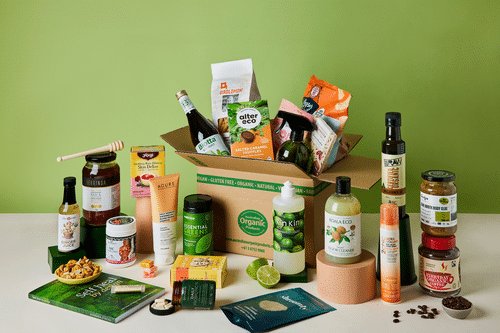Australian farmers’ markets are far more than just lively spaces for picking up fresh produce—they are cultural cornerstones, economic drivers, and the heart of a growing ethical food movement. Spanning rural townships, urban centers, and coastal villages, these markets are where local growers, artisans, and shoppers intersect in a vibrant exchange of quality, sustainability, and community spirit. Across the country, more than 200 officially recognized markets are redefining what it means to eat fresh and local. According to the Australian Farmers’ Markets Association, over 86% of produce sold at these events is harvested within 48 hours, ensuring unmatched freshness from paddock to plate.
From the sunlit stalls of Byron Bay to the community-centric corners of Adelaide, the diversity and scope of these markets are staggering. In places like Carriageworks Farmers Market, shoppers not only fill their baskets with organic heirloom tomatoes and free-range eggs, but also chat with producers about ethical sourcing and seasonal planting. These relationships—personal and transparent—are central to why Australian farmers’ markets continue to flourish in a world otherwise dominated by anonymous supermarket aisles.
Beyond freshness, these markets serve as essential economic engines. Regional communities across states like Victoria, Tasmania, and Western Australia rely on farmers’ markets to inject over AUD 2 billion annually into local economies. The Orange Farmers Market, nestled in New South Wales’ wine country, draws thousands each month, stimulating not only food sales but also tourism and hospitality sectors. Similarly, destinations such as Adelaide Showground Farmers Market have become weekend rituals, with more than 5,000 visitors flocking in every Sunday.
These markets are also hotbeds of artisanal innovation. Visit the Fremantle Markets or Northey Street City Farm Market and you’ll find handcrafted cheeses, raw vegan desserts, fermented drinks, and native bush foods rarely found elsewhere. Many of these offerings come from micro-businesses or startups run by families or young entrepreneurs seeking to build eco-conscious brands. According to Organic Industries of Australia, 38% of goods sold in farmers’ markets bear some form of organic certification, reflecting growing consumer demand for chemical-free and ethically sourced products.
But it’s not just about food—it’s about the experience. In urban hubs like Melbourne and Brisbane, markets double as social events and family-friendly retreats. The Melbourne Farmers Markets network hosts workshops on composting, kids’ scavenger hunts, and cooking demonstrations that attract young professionals, parents, and foodies alike. These experiences create loyal communities and give rise to local food movements that celebrate sustainability, multicultural cuisine, and a slower, more intentional way of living. Meanwhile, The Farm Byron Bay is a holistic example of farm-to-fork education, combining farmers’ markets, organic restaurants, and workshops all in one idyllic location.
In the evolving food landscape of Australia, these markets have become pivotal spaces where values, flavors, and local pride converge. Whether you’re exploring the Harvest Launceston Market in Tasmania or the lively Brisbane Powerhouse Market, Australian farmers’ markets offer more than groceries—they offer connection, culture, and conscious consumption.
From Paddock to Plate: Celebrating Freshness at Local Markets
Locally Grown, Exceptionally Fresh
Australian farmers’ markets are the heartbeat of fresh, local food distribution. With over 200 active farmers’ markets across the country, consumers have direct access to fruits, vegetables, meats, and dairy sourced within a 100 km radius. A 2023 report by the Australian Farmers’ Markets Association found that 86% of market produce is harvested less than 48 hours before sale, ensuring peak freshness.
Boosting Regional Economies
These markets are not just about fresh food—they’re powerful economic engines. They contribute more than AUD 2 billion annually to regional economies. Stallholders often reinvest in local services, supporting transport, packaging, and small-scale food production.
Supporting Sustainable Practices
Australian farmers’ markets also lead the way in sustainability. Over 60% of vendors practice organic or low-intervention farming, and 75% use biodegradable or reusable packaging. By cutting long supply chains, markets reduce food miles, minimizing carbon emissions significantly.
Building Farmer-Customer Relationships
A unique feature of Australian farmers’ markets is the relationship between growers and buyers. Studies show 74% of customers value direct interaction with farmers, asking questions about produce origin, pesticides, and seasonality.
Diverse Seasonal Offerings
From Queensland mangoes in summer to Tasmanian apples in autumn, the variety in Australian farmers’ markets reflects the country’s climatic diversity. Seasonal produce rotates monthly, encouraging healthier eating habits and stronger connection to the land. Australian farmers’ markets are transforming food access through freshness and transparency.
Regional Treasures: Exploring Rural Farmers’ Markets Across Australia
Hidden Gems in the Heartland
Beyond the city, regional markets offer an intimate glimpse into Australia’s agricultural richness. Locations like Orange, Albany, and Margaret River host thriving markets. The Orange Farmers Market draws over 3,000 visitors monthly, despite the town’s modest population.
Authentic Farm-to-Table Experiences
Visitors can sample freshly churned butter, raw honey, or even warm sourdough straight from a wood-fired oven. Around 92% of rural markets sell items that are grown or processed within 50 km of the stall site, offering true farm-to-table authenticity.
Boosting Agritourism in Small Towns
Australian farmers’ markets in rural areas drive tourism. According to Tourism Australia, 47% of regional visitors include a local market visit in their itinerary. These events often coincide with food and wine festivals, creating multi-day travel experiences that increase local revenue.
Showcasing Indigenous and Heritage Foods
Markets like the Broome Courthouse Market feature bush tomatoes, quandong jam, and wattleseed bread. These ingredients promote native food awareness and support Indigenous growers, who comprise around 8% of regional market vendors.
Community Spirit and Local Identity
Rural Australian farmers’ markets are social hubs—places where the local footy team sells sausages and musicians play folk tunes. With over 70% of attendees identifying their market as a “community cornerstone,” these spaces reinforce cultural and social ties.
Organic, Artisanal, and Ethical: The Rise of Conscious Consumerism
Demand for Transparency and Ethics
Australian farmers’ markets reflect a growing consumer shift toward ethical eating. Data from Organic Industries Australia reveals a 13.5% annual growth in organic produce sales, much of which is driven by market trade rather than supermarkets.
Handcrafted and Small-Batch Goods
Markets have become hotspots for artisanal cheeses, sourdoughs, kombucha, and fermented vegetables. Approximately 56% of stalls at Australian farmers’ markets now feature hand-crafted or home-prepared goods that aren’t mass-produced.
Organic Certification and Quality Assurance
More than 38% of market produce carries an official organic certification. Vendors often display full traceability—from seed to stand—fostering trust. Some markets, like the Byron Farmers Market, have their own vendor auditing systems to ensure adherence to sustainable standards.
Conscious Spending Patterns
According to a 2022 Nielsen study, 64% of Australians are willing to pay more for ethically sourced food. At farmers’ markets, this spending supports small businesses, rather than large agricultural conglomerates. Australian farmers’ markets are where ethics, quality, and local passion intersect.
Fostering Environmental Awareness
Reusable bags, compost bins, and zero-waste philosophies are the norm at these markets. Some, like the Adelaide Showground Farmers’ Market, boast over 95% plastic-free compliance. The environmental ethos goes hand-in-hand with the ethical consumer movement.
Family Outings and Gourmet Discoveries: The Social Side of Farmers’ Markets
Weekend Traditions and Lifestyle
Visiting Australian farmers’ markets is a weekend ritual for many families. A study by Market Research Australia found that 72% of urban households with children visit a market monthly. It’s not just about groceries—it’s about experience.
Kids’ Activities and Farm Education
Many markets include petting zoos, pony rides, and farm-themed crafts. Melbourne’s Slow Food Farmers’ Market runs “Junior Farmer” workshops, attended by over 400 children annually. These events teach sustainability, composting, and healthy eating from a young age.
Live Music, Picnics, and Community Vibe
Street musicians, food trucks, and open-air cafes make markets ideal for weekend hangouts. At Brisbane Powerhouse Market, live jazz and lakeside seating attract more than 5,000 visitors every Sunday. Australian farmers’ markets offer both culinary and cultural delights.
Gourmet Finds for Foodies
Markets like the Carriageworks Farmers Market in Sydney feature Michelin-grade produce and rare truffle varieties. With 30+ gourmet vendors, it’s a top destination for chefs and food critics alike. Australian farmers’ markets serve as testing grounds for culinary innovation.
Inclusive and Welcoming Spaces
Australian farmers’ markets often feature stalls catering to vegetarian, vegan, gluten-free, and halal diets. Around 62% of surveyed attendees praised markets for being inclusive and diverse—fitting for Australia’s multicultural fabric. These markets have evolved into lifestyle destinations where everyone finds a reason to return.




